Tag:national trust
Nestled amidst the bustling inner suburbs of Melbourne, Ripponlea Estate offers a captivating glimpse into Victoria’s grand colonial past. Step back in time and explore the meticulously preserved Ripponlea Mansion, a magnificent example of Italianate architecture that whispers tales of affluence, societal change, and the enduring legacy of the wealthy Clarke family. As you wander through the ornately decorated rooms, marvel at the opulent furnishings, and lose yourself in the meticulously landscaped gardens, you are transported to a bygone era of elegance and grandeur.
Ripponlea Estate is a historic site in the heart of Melbourne, well known for its cultural heritage and stunning architecture. It features a grand mansion, lush gardens, and a rich history, making it an iconic landmark. The estate dates back to the 19th century when it was established by Sir Frederick Sargood, a well-known businessman and philanthropist from Melbourne.
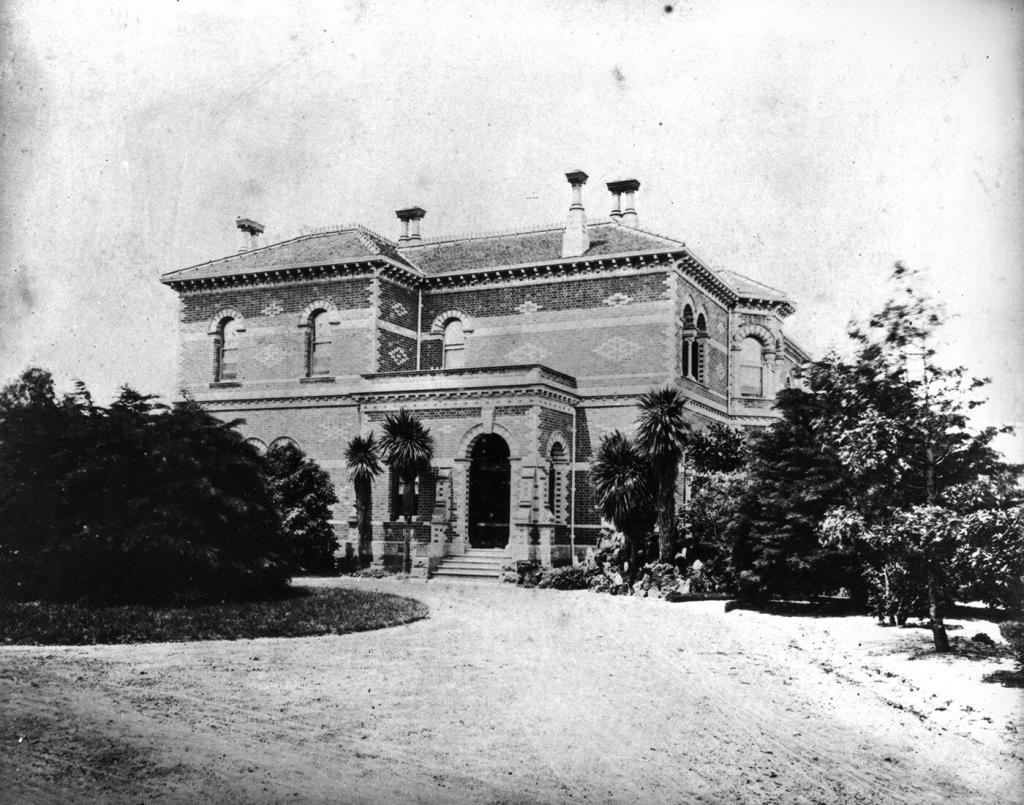
The Mansion
In 1868, Sir Sargood purchased the land. Architect Joseph Reed was commissioned to design a luxurious fifteen-room mansion that would become the focal point of the estate. The Victorian Italianate mansion, similar in style to Werribee Mansion, was a stunningly beautiful architectural masterpiece. It featured intricate details, a grand staircase, luxurious interiors, an underground watering system, and even its own electricity supply. It was rare for that period to have indoor bathrooms, but Ripponlea had them, adding to its reputation as a symbol of luxury and sophistication.

During the 1880s, the mansion underwent significant renovations. The dining room was enlarged to the size it is today. In addition, a tower was constructed, and a second floor was added to the back wing of the mansion. The kitchens were also remodelled, and a larger fernery was planted. A veranda was fitted on the west front, and the gardens were redesigned. Furthermore, the drainage system was extended to improve the overall functionality of the mansion.
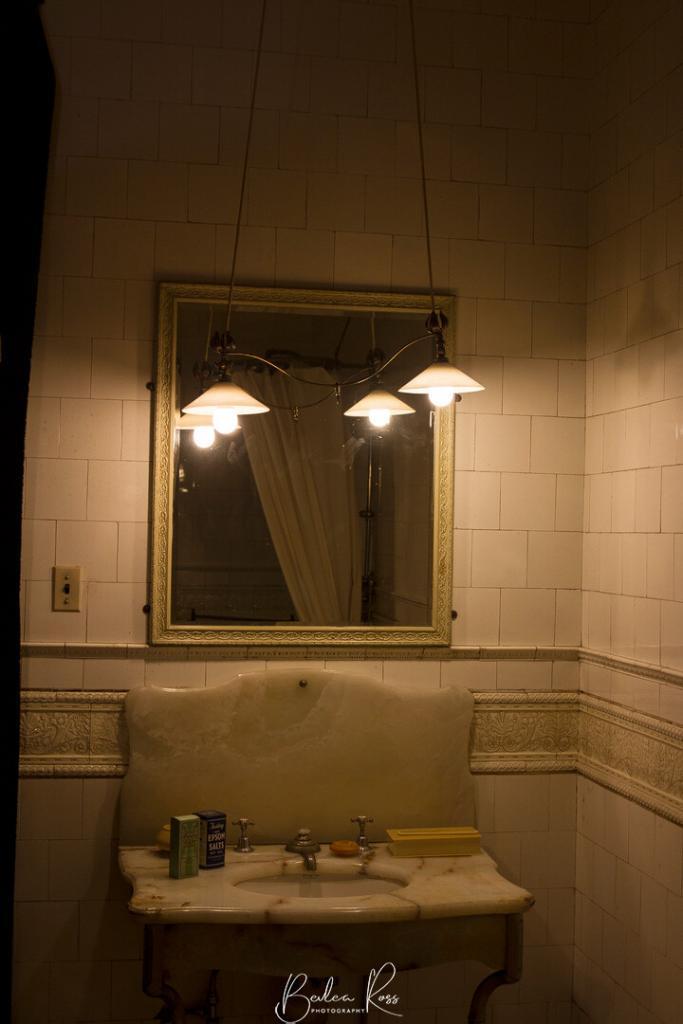
In 1897, the mansion underwent further renovations. These included the addition of the current front entrance, a gentleman’s washroom, and an office. The study was extended to become the drawing room, while the former drawing room was transformed into an informal sitting room. The staircase was rebuilt, and the mansion was expanded from six to eleven bedrooms, some intended for staff. Additionally, a large new bathroom was added upstairs.
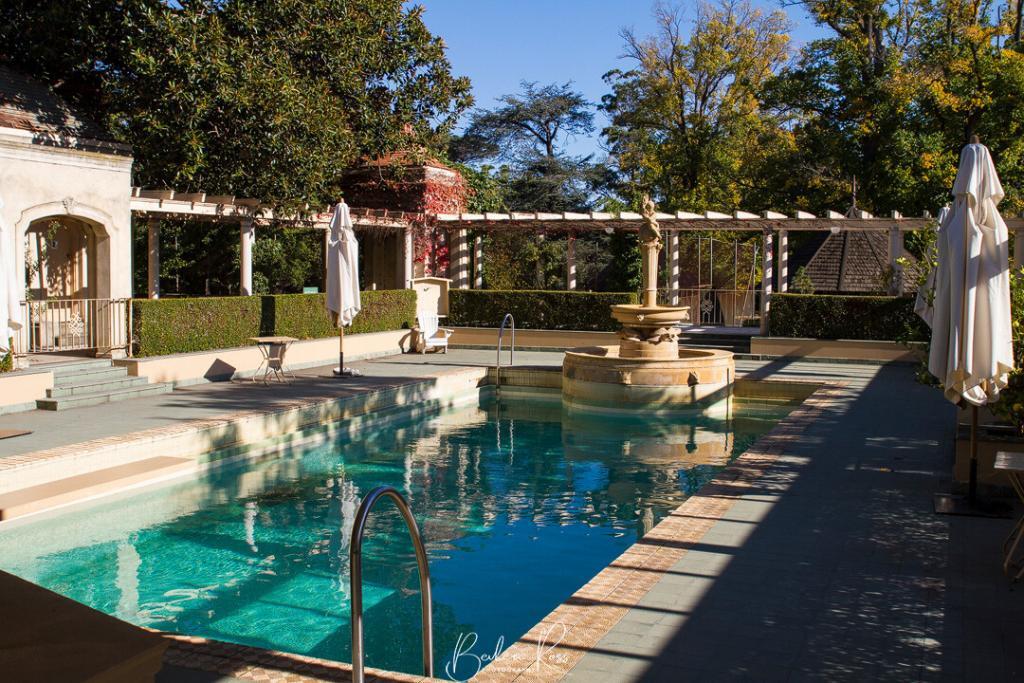
The Sargood Family
Upon completing Ripponlea, Sir Sargood, his first wife Marian, and their nine surviving children moved into the mansion. They were accompanied by an entourage of staff, which included seven maids, a butler, seven gardeners, a coachman, and a groom. In 1878, Marian Sargood passed away while giving birth to her twelfth child (a stillborn boy) on her fortieth birthday. Following her death, Sargood took his children and three staff members back to England. However, in 1882, he returned to the mansion with a new wife and another child, a daughter born the day before the ship docked. After his return, he continued with his career as a member of parliament and was later appointed as the Minister of Defence.

In 1901, Sargood was elected to the first Australian Senate. Unfortunately, during a trip to New Zealand in 1903, he fell ill suddenly and passed away. After his death, Lady Sargood sold the property for 20,000 pounds. She then left for England with her daughter, never to return.
New Owners
In 1903, a syndicate led by Thomas Bent acquired Ripponlea from Lady Sargood. Bent, who later became the Premier of Victoria in 1904, used the property for hosting charity events and entertaining guests. However, he also started selling parts of the land. Bent was forced to resign in 1908 due to suspicion of corruption. He passed away the following year during an investigation into his alleged connection to land scandals. His death prevented Ripponlea from being further divided.

In 1903, Benjamin Nathan, a successful businessman, bought the estate. Nathan had made his fortune in the furniture business as the Maples Furniture and Maples Music owner. He moved into the property with his wife and two daughters and introduced more native plants to the garden. He also added a conservatory and 14 glass houses to grow orchids and employed 14-17 gardeners to maintain the garden. After Nathan died in 1935, his daughter Louise inherited the property.
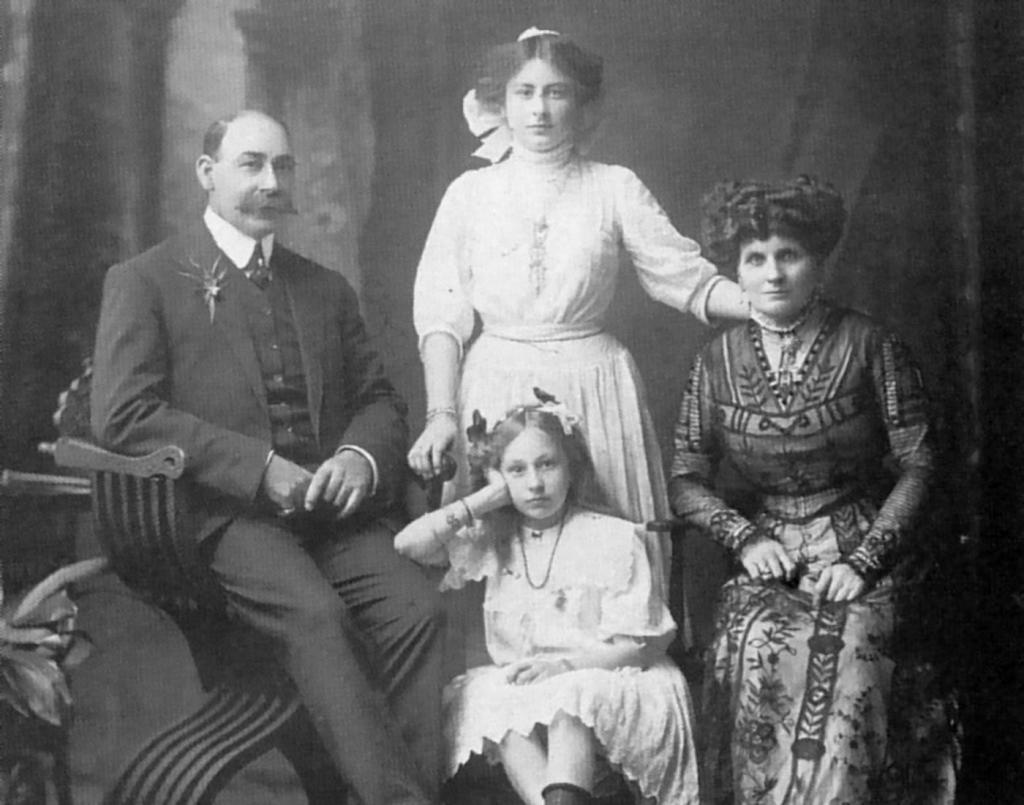
Louise, her husband, lawyer Timothy Jones, and their four children moved into the property and started renovating it. They added a new kitchen and remodelled the dining room. The original ballroom was removed and replaced with a swimming pool, while the billiard room and museum were converted into the new ballroom. The house was cleared of clutter and redecorated in an elegant neo-baroque style featuring mirrors and soft greens.


Saving Ripponlea
In the early 1950s, Louise sold some of her land to ABC, who wanted to build a television studio. However, in 1963, ABC wanted to expand the studio. Subsequently, the federal government issued a compulsory acquisition order for an additional four acres of Louise’s land. She fought the order in the high court but unfortunately lost. A demonstration against the acquisition attracted 10,000 people. Louise knew her father wanted the gardens protected, so she arranged for the property to be transferred to the National Trust upon her death.

In 1972, Louise passed away, and the National Trust inherited Ripponlea. As a result, the acquisition order was withdrawn. Ripponlea was opened to the public for the first time in 1974. Within the first three months, it was visited by one hundred thousand people. Recognising its historical and cultural importance, the National Trust of Australia officially classified Ripponlea as a heritage-listed property in 1979. This designation ensured that the estate would be preserved and maintained for the benefit of future generations.
Today
Ripponlea Estate is a public attraction that allows visitors to travel back in time as they explore the mansion, gardens, and surrounding grounds. Guided tours are available, providing valuable insights into the lives of the estate’s former residents and the historical events that took place there. In addition to being a popular tourist destination, the estate is also a venue for events, weddings, and cultural programs. It is also frequently used as a film location, making it a vibrant part of contemporary Melbourne.
Visiting
192 Hotham Street, Elsternwick 3185 VIC
Entry Fees: General Admission includes garden entry plus a guided tour of the mansion (subject to availability).
Adult: $15
Concession: $12
Child (3-15 years): $9
Family (2 adults + 2 children): $40.
National Trust Members FREE.
Residents of the City of Glen Eira and Port Phillip have free access to the gardens at Rippon Lea Estate.
To obtain an entry card, residents must show acceptable forms of ID with proof of residency and complete an application form available in the Gatehouse on entry to the property.
Dows Pharmacy at Chiltern was established in 1859. The pharmacy holds significant historical value as it is one of the few shops that have been preserved in its original state, providing a unique insight into the past. Although it closed in 1968, the pharmacy’s contents remained untouched, making it a unique time capsule of the past.
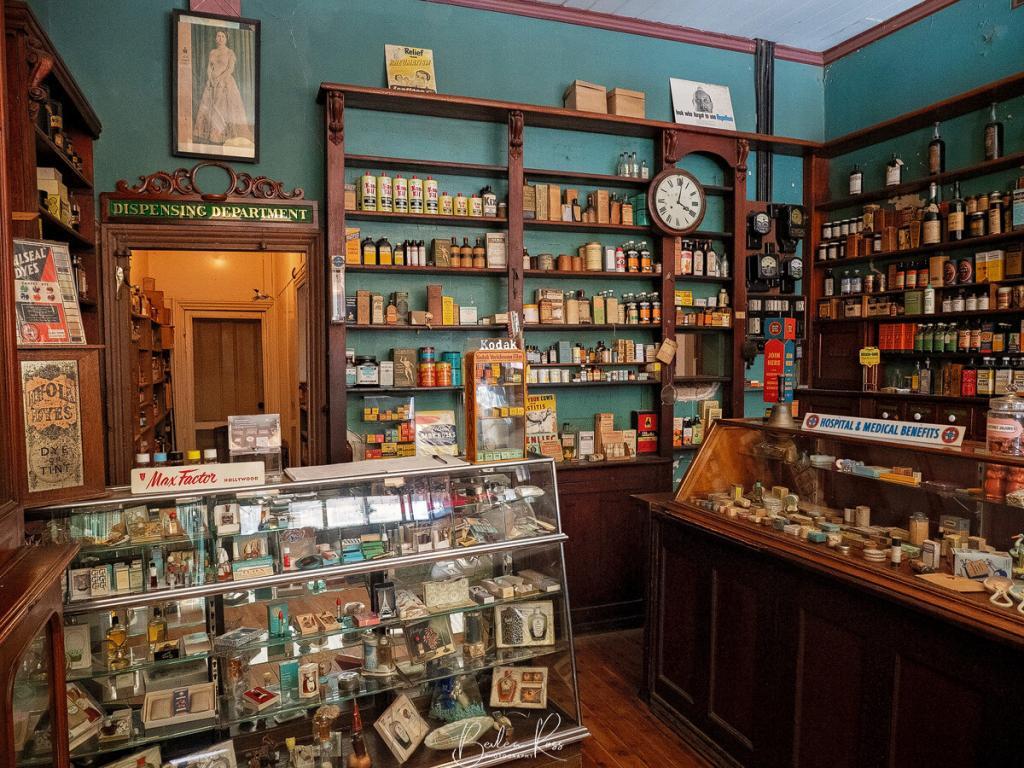
The Pharmacy was first run by William Witt, who opened the doors in 1859. David McEwen owned the pharmacy from 1864 to 1891. He was the father of the Australian prime minister, John McEwen, who took over the Prime Ministership in a caretaker role upon the disappearance of Harold Holt. In 1929, Hilda Dow purchased the pharmacy. The Dows ran it for the next 38 years until Hilda retired in 1968. During their tenure, the pharmacy became a thriving community hub, providing essential services to the people of Chiltern.
Hilda Dow
Hilda Dow (nee Grey) was the daughter of police magistrate Charles Grey and sister of Royal Melbourne Hospital Lady Superintendent Helene Grey, OBE. She became a student of the Victorian College of Pharmacy in 1919. In 1929, she worked at Poynton’s pharmacy in Morwell, when she purchased the pharmacy at Chiltern in Victoria. She was elected to the Pharmaceutical Society of Victoria as a member in 1930.
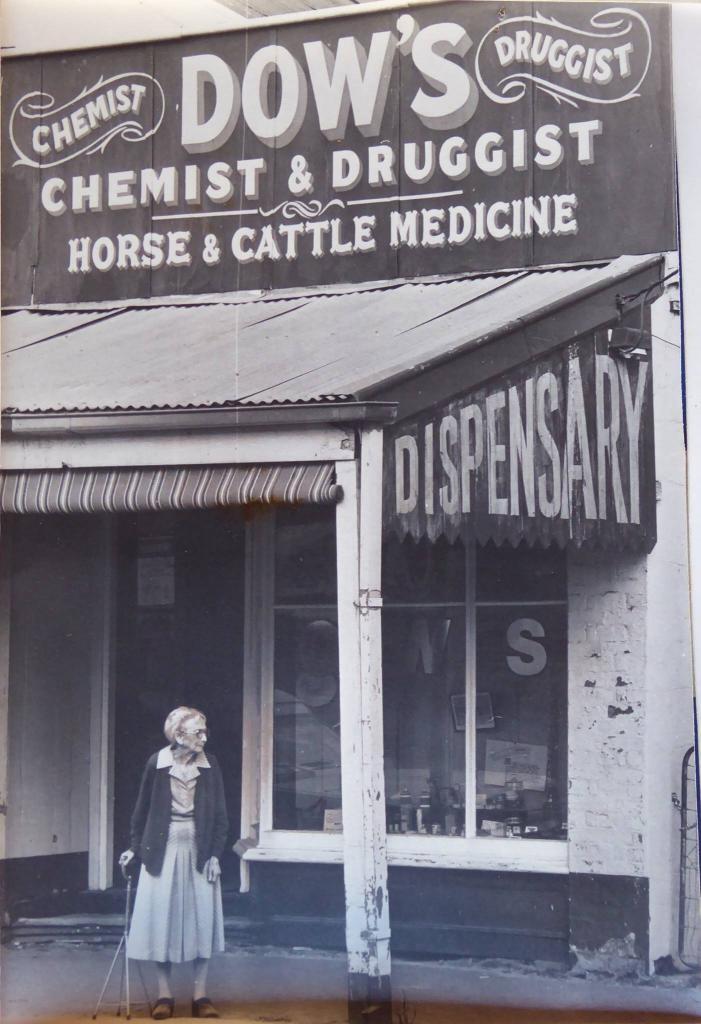
Hilda purchased the pharmacy in 1929 on the eve of the great depression. Until they married in 1931, Hilda resided at the hotel across the street while Roy lived in the residence at the back of the pharmacy. After their marriage, Hilda joined him in the residence. Hilda apprenticed Roy in 1933, and the couple ran the pharmacy in Chiltern until 1968 when they closed the doors.
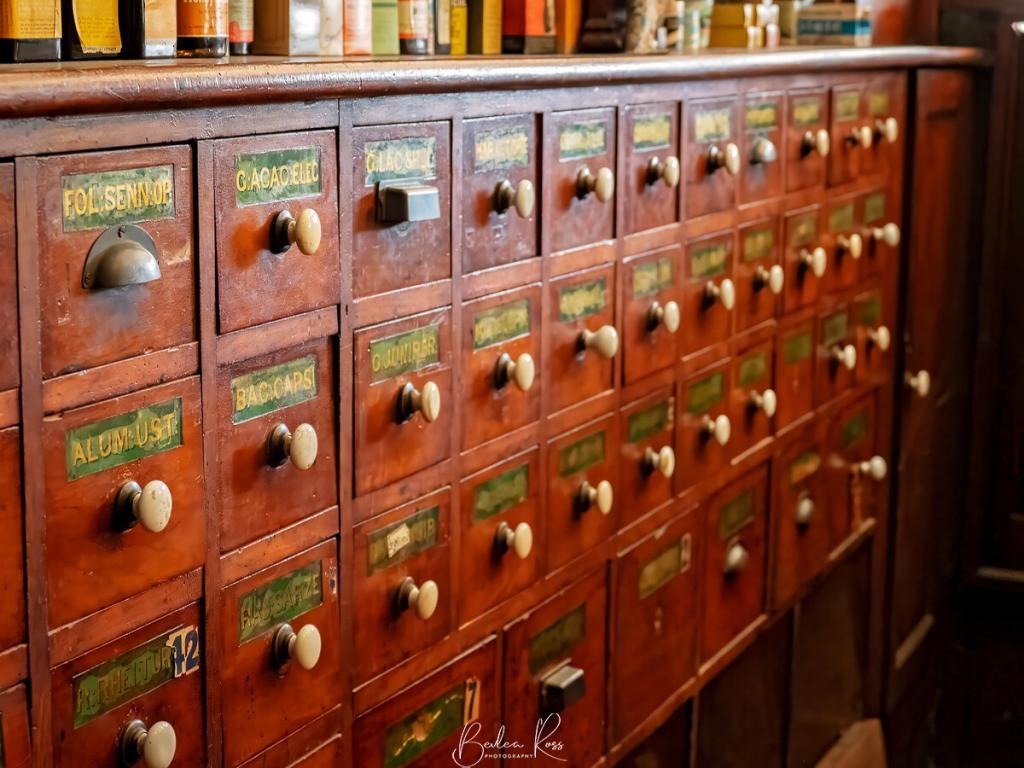
After retiring in 1968, Hilda Dow attempted to sell her pharmacy, but unfortunately, no buyers were interested in purchasing it. As a result, it remained closed and abandoned for many years. Finally, in 1988, Mrs. Dow generously donated the pharmacy to the National Trust. Dows pharmacy is now a museum for visitors to explore. Hilda Dow was also a highly involved member of various organisations, including the North East branch of the National Trust, the hospital committee, the Infant Welfare Centre board, the Red Cross, and the Chiltern Branch of the County Women’s Association, where she held a leadership position.

National Trust
The National Trust now runs the pharmacy as a museum. A collection of more than 4,000 original items offers an fascinating insight into the history of medicine and pharmacy. Visitors can explore a variety of artifacts, such as bottles, jars, scales, measuring cups, dispensing equipment, and displays of medicines, photographic supplies, and shop fittings.
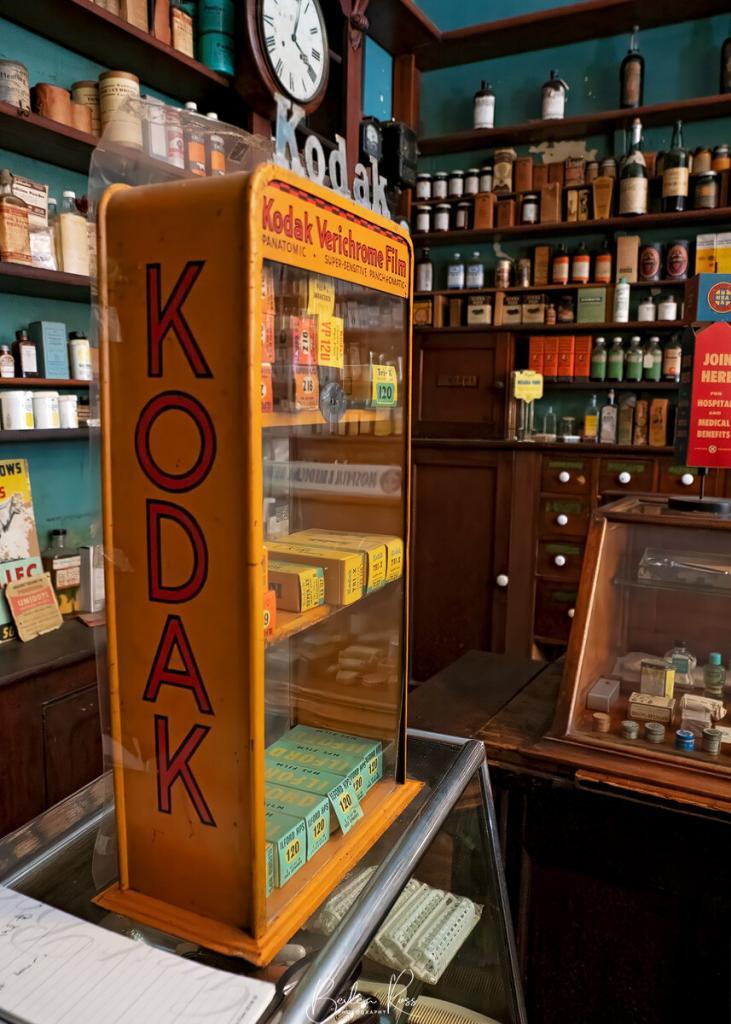
One of the most striking features of Dows Pharmacy is its time capsule-like atmosphere. The contents of the pharmacy were left untouched when it closed in 1968, and as a result, it feels like stepping back in time. The shelves are still stocked with medicines, the jars are still filled with herbs, and the scales are still set to weigh prescriptions.
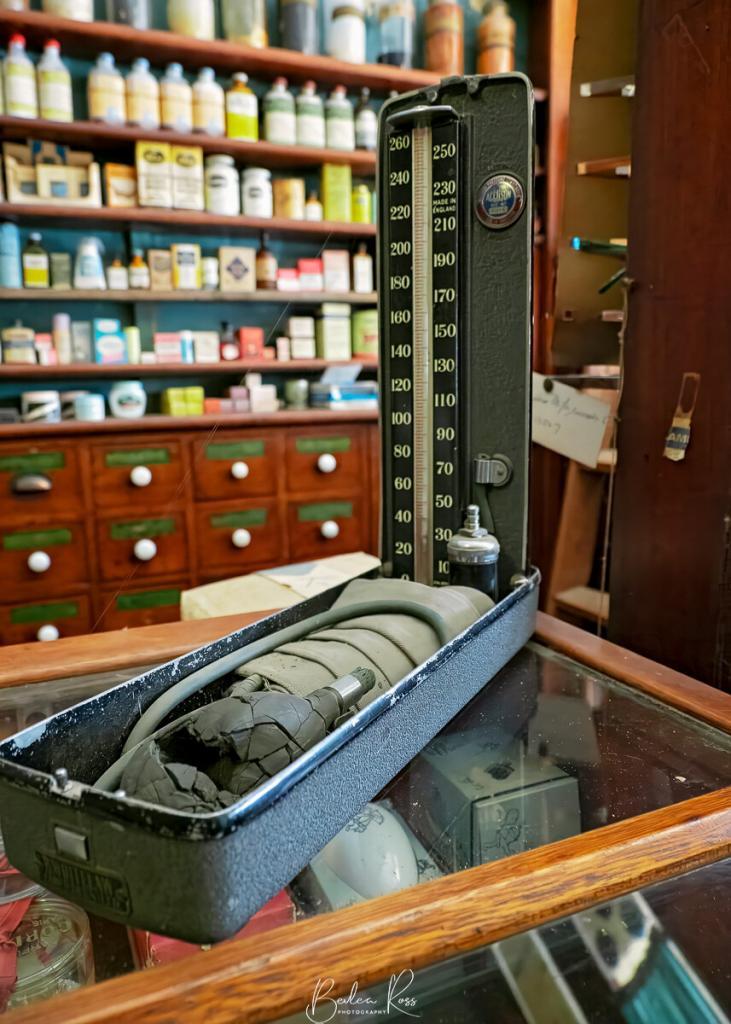
Hilda and Roy were both active members in the Chiltern community. Roy received an MBE in 1970 for his valuable services to pharmacy in Victoria. Unfortunately, Roy passed away in 1976, and Hilda followed fourteen years later, passing away in a care home at the age of 92.
Fast facts
- The pharmacy was built in the Victorian Italianate style.
- The original fittings and fixtures, including the mahogany counters, brass scales, and glass display cabinets, are still in place.
- The pharmacy’s collection of medicines includes over 1,000 different items dating from the 19th and early 20th centuries.
- The pharmacy also has a collection of photographic supplies, including cameras, lenses, and film.
- Dows Pharmacy was donated to the National Trust of Australia in 1988.

Visiting the Pharmacy
Dows Pharmacy is a valuable historical resource and a fascinating place to visit. It is also a reminder of the important role that pharmacies have played in our communities, and it is a window into the past. If you are ever in Chiltern, be sure to stop by and take a look.
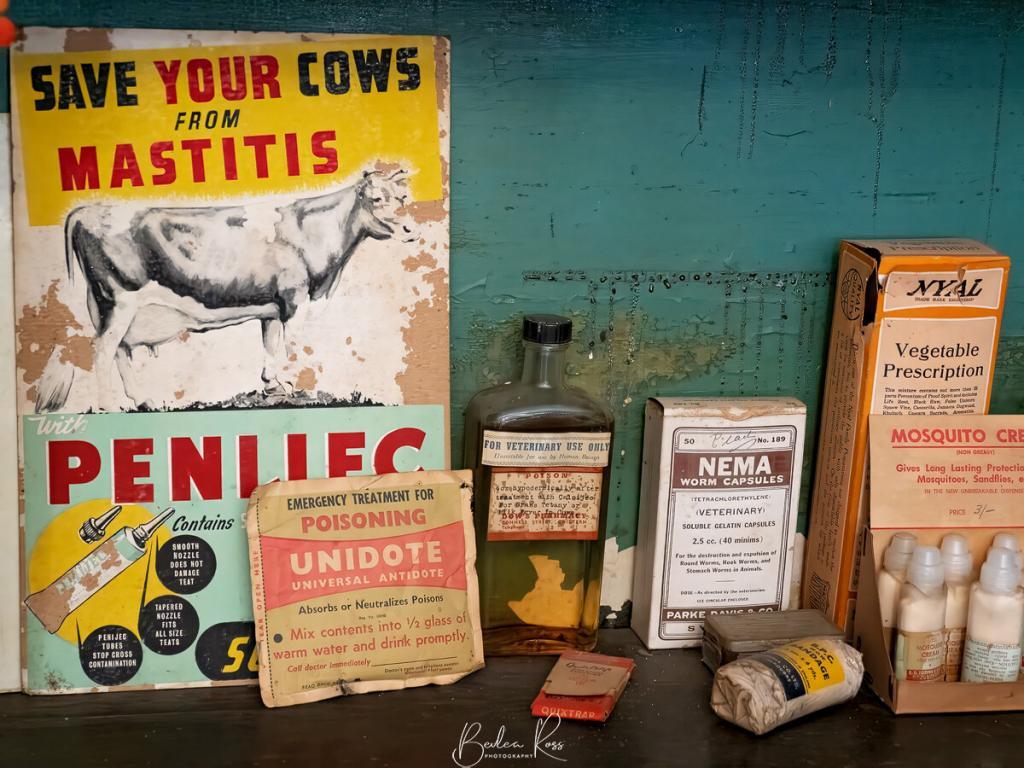
Dow’s pharmacy is open to the public on Tuesdays, Wednesdays, and Saturdays from 11 am to 2 pm. The pharmacy is also available for group tours by appointment.
National Trust Members: FREE
Adult: $5
Concession: $4
Child: $3
Family: $12
42 Conness Street, Chiltern
Nestled in the foothills of the Great Dividing Range, Chiltern is a quaint town located in the northeastern region of Victoria, Australia. With a population of around 1,000 residents, this charming town was established in 1857 during the Victorian gold rush. Despite the end of this era in the late 1860s, Chiltern remained a prosperous community with a thriving economy based on agriculture, timber, and small enterprises.

Chiltern was first known as Black Dog Creek, supposedly named after a black dingo that was hunted in the vicinity during the 1830s. It was officially gazetted as a town in 1851, surveyed in 1853, and later named Chiltern after the Chiltern Hills in England.
Famous Sons
- John McEwen (1900-1980), 18th Prime Minister of Australia
- Barrie Cassidy (born 1957), former political journalist
- Nigel Lappin (born 1977), a former Australian rules footballer
- Matthew Lappin (born 1979), a former Australian rules footballer
National Trust properties
Lake View House
The charming red brick house, constructed in 1870, has been recently restored and decorated in the fashion of its era. Significantly, it replicates the ambience of a lakeside country villa in a thriving mining town. Lake View House was also the home of Ethel Florence Richardson (a renowned Australian author who wrote under the pen name Henry Handel Richardson) in 1876. The house has a special significance in Australian literary history due to its association with The Getting of Wisdom.

Richardson cherished the memories of her early years spent in Chiltern, which she referred to as ‘Barambogie’ in her novel, The Fortunes of Richard Mahony. Today, Lake View House proudly displays a collection of Richardson’s personal items as a tribute to her legacy.
- 18-22 Victoria St, Chiltern
- Open 11 am – 2 pm Saturdays and every 3rd Sunday 1 pm – 4 pm.
Dow’s Pharmacy
A pharmacy for over a century, this fascinating commercial premises was built in 1859. One of the early pharmacists was David McEwen, the father of the Australian prime minister, John McEwen. John McEwan became caretaker Prime Minister of Australia following the drowning of Harold Holt. Hilda retired in 1968, closing the doors behind her. Significantly, everything inside remained intact.

Some stock and equipment even predated Hilda’s tenure and are from the nineteenth and early twentieth centuries. Stepping through the doors of the pharmacy is like stepping back in time. With everything still there, it’s like Hilda has just stepped out for a moment.

- Adult: $5, Concession: $4, Child: $3, Family: $12
- National Trust Members: FREE
- 42 Conness Street, Chiltern
- Open Tuesdays from 11 am to 2 pm, Wednesdays from 9 am to 3 pm & Saturdays from 10 am to 2 pm.
The Federal Standard
The Federal Standard Printing Works is one of the few substantially intact provincial newspaper printers from the gold mining era. Built in 1860, it was founded by Felix Ashworth, George Boyer, and George H. Mott in 1869. Their first publication was The Federal Standard, which ran for 110 years. The printing works also produced newspapers like The Murray Gazette, The Border Post, and The Ovens Constitution.

The printing works are still equipped with printing machinery from the 1870s to the 1930s. The machinery is still in working order and is maintained by volunteers.

- 24 Main St, Chiltern VIC 3683
- by appointment
- (03) 9656 9800
Other notable properties
Star Hotel and Theatre and Historic Grapevine: The Star Theatre is a hall connected to the Star Hotel, located at Main Street and Conness Street. Its construction dates back to 1866. Interestingly, the Star Hotel’s grounds boast the world’s largest Grapevine, which the Guinness World of Records has officially recognised.
From 1902 until 1964, the Star Theatre served as the town’s cinema. A projection box was erected outside near the stage, and the stage was transformed into raised seating. Though the projection booth has been demolished, the projection port holes can still be seen on the rear wall of the building. The theatre later closed and was repurposed as an antique store.
The Star Theatre, which was listed by the National Trust in November 1972, has been restored for films and live shows since 1996. It re-opened on May 18th of that year with a screening of “In the Good Old Summertime” starring Judy Garland. The theatre is fully equipped for 16mm presentations and can be hired for special screenings.

There is a grapevine planted in 1867 located in the courtyard. It has a trunk measuring 1.84 metres and a 12-metre-long branch, making it reputedly the biggest grapevine worldwide.
- Cnr Main St and Conness St
- 03 5726 1395

Chiltern Athenaeum: The brick building was built in 1866 to replace a previous timber structure. It previously served as the Council Chamber, Town Hall, and Library/Reading Room. Despite the Library relocating in 1970, a fascinating collection of Goldfield’s literature remained in the building. Today, the Chiltern Athenaeum Museum continues to operate, staffed by volunteers.
Kelly gang
Chiltern is significant in the Kelly saga, as Senior Constable James Lynch from Chiltern signed a warrant for the arrest of Dan Kelly and his cousin Jack Lloyd on suspicion of horse theft on April 5th, 1878. Unfortunately, this warrant sparked a series of events that ultimately led to the police murders at Stringbark Creek, the Kelly Gang manhunt, the siege at Glenrowan, and eventually, Ned Kelly’s execution by hanging.

The QVB, short for Queen Victoria Building, is an iconic building constructed in 1898 by Scottish architect George McRae. It was built on the site of the original Sydney markets and was intended as a tribute to Queen Victoria’s Diamond Jubilee. Significantly, the construction occurred during a period of economic struggle in Sydney, making the accomplishment all the more impressive.


The Design
Architect George McRae who had also designed the Sydney Town Hall and Caves House at the Jenolan Caves presented four facade designs for the QVB, Gothic, Queen Anne, Renaissance, and Romanesque. Upon reviewing the designs, the market committee chose the Romanesque design, which was made of sandstone and had a roofscape of 21 copper domes. . The plans also incorporated a residential hotel spanning multiple floors at Druitt Street. In addition, a concert hall capable of accommodating 500 people was planned at the Market Street end. The building would also feature shops, warehouses, and markets in the basement, which four hydraulic lifts would service. In today’s money, the QVB would cost around $2 billion to build.


Located between George, Market, York, and Druitt Streets, the QVB building occupies an entire city block. At the heart of the building stands the impressive central dome, made up of an inner glass dome and an outer copper-sheathed dome. Stunning stained glass windows and remarkable architecture are evident throughout the tower, with an authentic 19th-century staircase beside the dome.

Mr W P. Macintosh was awarded the contract to design a symbolic group of marble figures for the central arch on George Street. He was also contracted to create another group for York Street above the prominent arches. The total cost for both statue groups was £3,3000.
Construction
Building took place between 1893 to 1898. In addition, the grand Romanesque architecture was planned to provide employment opportunities for many skilled craftsmen struggling to find work. These included stonemasons, plasterers, and stained window artists. While officially, it was named the “Queen Victoria Market Building”, it has since been commonly referred to as the QVB.

Mayor Mathew Harris officially opened the QVB on July 21, 1898. The ground floor of the building provided space for 58 shops, featuring a range of tenants such as tailors, mercers, boot importers, hairdressers, tobacconists, florists, chemists, fruiterers, and a tea room. The first floor comprised 17 spacious rooms utilised for warerooms, showrooms, and offices. The second floor, meanwhile, had 12 large rooms with a gallery. The Coffee Palace was located at the southern end, boasting a dining room, sitting area, drawing room, public spaces, 57 bedrooms, a gallery, and a promenade. The basement had cooling chambers, strong rooms, wine bodegas, cellars, and public toilets.

By 1901, the concert hall had been transformed into the city library, and the coffee palace had become offices. When the council became a tenant, they virtually obliterated the entire interior. It was deemed all too opulent, so they concreted over the tiling, spilt-levelled and subdivided. Tenants had changed considerably from those who first occupied the building, with only Singer Sewing Machine Co. and one tailor remaining. The new tenants included Piano tuners, dancing teachers, palmists, and clairvoyants.
Decline and Restoration
In the 1930s, notable alterations were made to the building’s architecture, such as installing new floors in galleries and revamping shopfronts to accommodate the Sydney City Council, a major tenant at the time. However, plans to demolish the building and create a city square and underground carpark were proposed between 1959 and 1971.

Fortunately, this caused an intense public campaign whereby conservationists and the public intervened, resulting in the preservation of the building. The National Trust classified the building in 1974 and this led to a significant restoration project, awarded to a Malaysian company, Ipoh Garden, in 1980, along with a 99-year lease.

“It is an architectural monstrosity, a wasteful, stupid building.”
Architect Harry Seidler, in favour of demolition, 26 August 1961
The QVB’s glass was damaged by the Hilton Hotel bombing in 1978. Subsequently, in 1979, the glass replacement process began alongside restoring the minor copper domes. Finally, in 1986, the fully restored QVB reopened its doors to the delight of locals and tourists.
In 2008, it underwent a $48 million renovation, which included the installation of new escalators, repainting, restoration of balustrades, carpets, signage, and bathrooms. The following year, the QVB ballroom was revamped and converted into a charming tearoom. Significantly, every element of the building has been carefully restored, from the arches and pillars to the balustrades and intricately tiled floors, preserving the original grandeur of the structure.

Heritage Status
The QVB Building is known for its stunning architecture, remarkable central dome, intricate stained glass windows, and ornate decorations. The building’s design and embellishments pay homage to the extraordinary craftsmanship of its time. Recognising its historical and cultural significance as a significant Sydney landmark, the QVB was included in the New South Wales State Heritage Register in 1989.

“The introduction of a few rabbits could do little harm and might provide a touch of home,” Thomas Austin
Rabbits!
Thomas’s fondness for rabbit hunting led to rabbits in plague proportions across Australia and the building of the Rabbit-Proof Fence across Western Australia between 1901 and 1907 to stop the spread of rabbits into the state from the eastern states. Thomas was a member of the Acclimatization Society of Victoria. The society introduced non-native animals and plants to the growing colony – as a member, Thomas also brought in blackbirds and partridges. Thomas Austin and his wife Elizabeth built the lavish 42-room mansion in 1871. He died just six months after it was completed, but Elizabeth lived at Barwon Park until her death in 1910 and became a noted philanthropist. One of her biggest accomplishments was funding the Hospital for Incurables (later the Austin Hospital) in Heidelberg.
Thomas Austin and his wife Elizabeth built the lavish 42-room mansion in 1871. He died just six months after it was completed, but Elizabeth lived at Barwon Park until her death in 1910 and became a noted philanthropist. One of her biggest accomplishments was funding the Hospital for Incurables (later the Austin Hospital) in Heidelberg. 
National Trust
In 1912 the house was sold Batson family, who later bequeathed it to the National Trust. At the time of the bequest, while the house was still virtually an intact relic, it had fallen into serious disrepair, and much of the furniture, artworks, and silverware had been sold off to provide an income for the two sisters and one brother left in the house. The National Trust has since repaired the mansion and fitted it out with furniture that had been part of the house – or of the time.
The Grand Staircase
The staircase was the first of its kind in Australia – being that it led directly up the centre of the hall and then branched left and right… rather than being on the side of the hall, as was the norm. And while it does look exactly like the one at Werribee Mansion – it was built three years prior to Werribee Mansion. Thus, it was the Austins to introduce the style to Australia. It was also built which much wider steps than normal to allow the ladies to descend the staircase gracefully and make a ‘grand entrance.
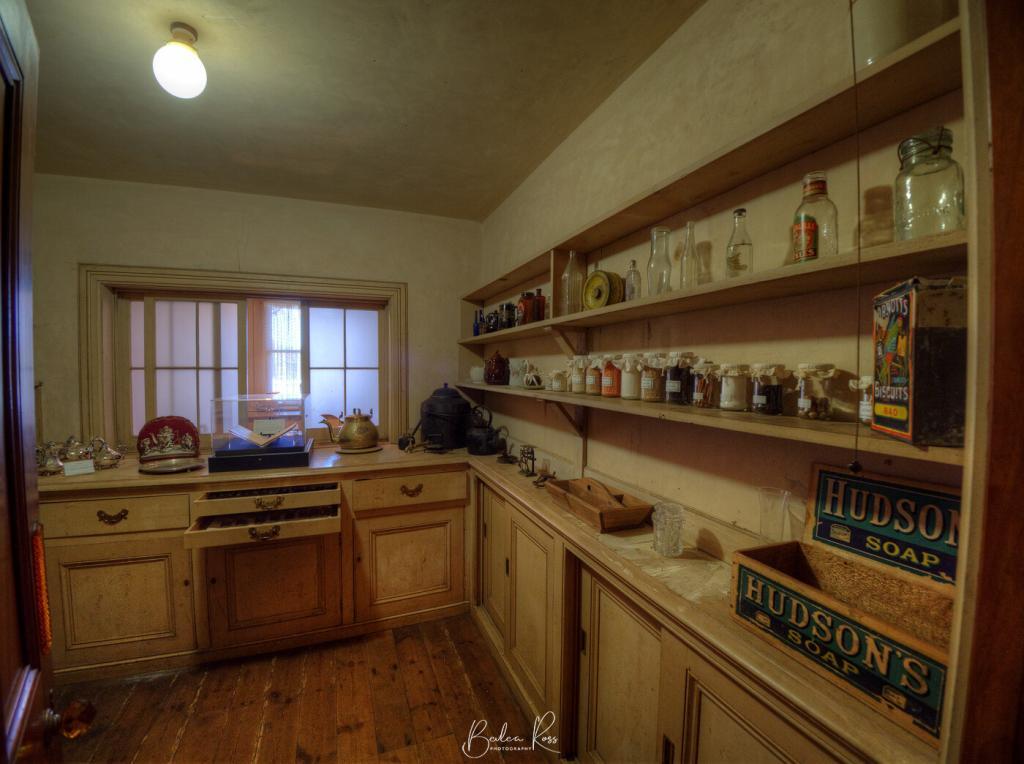
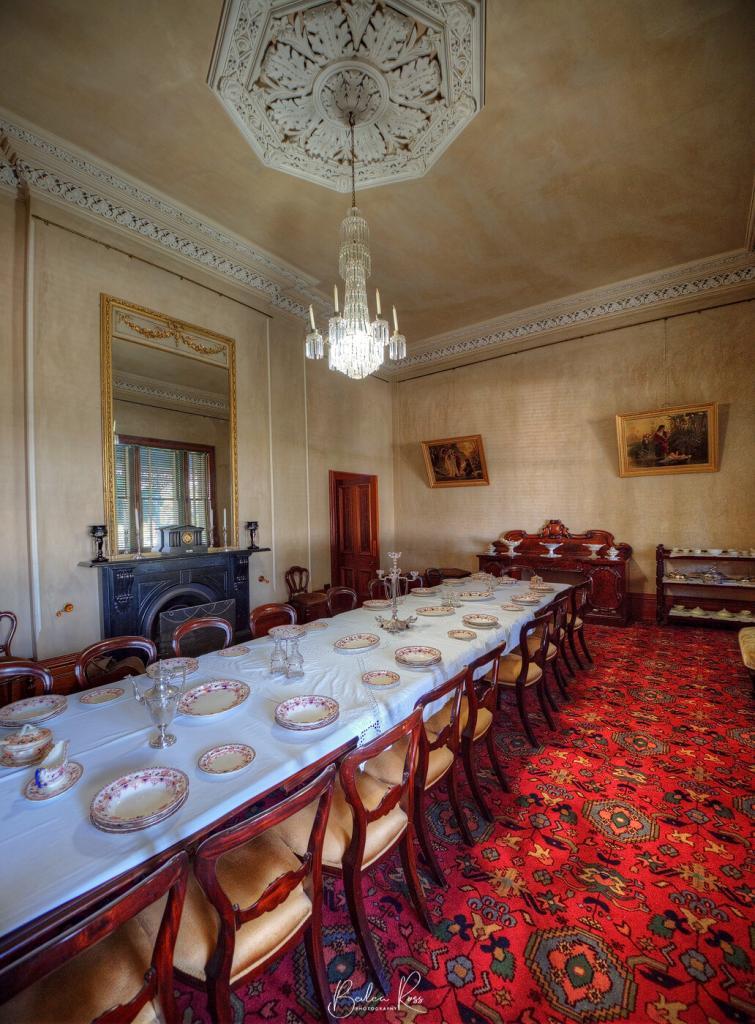
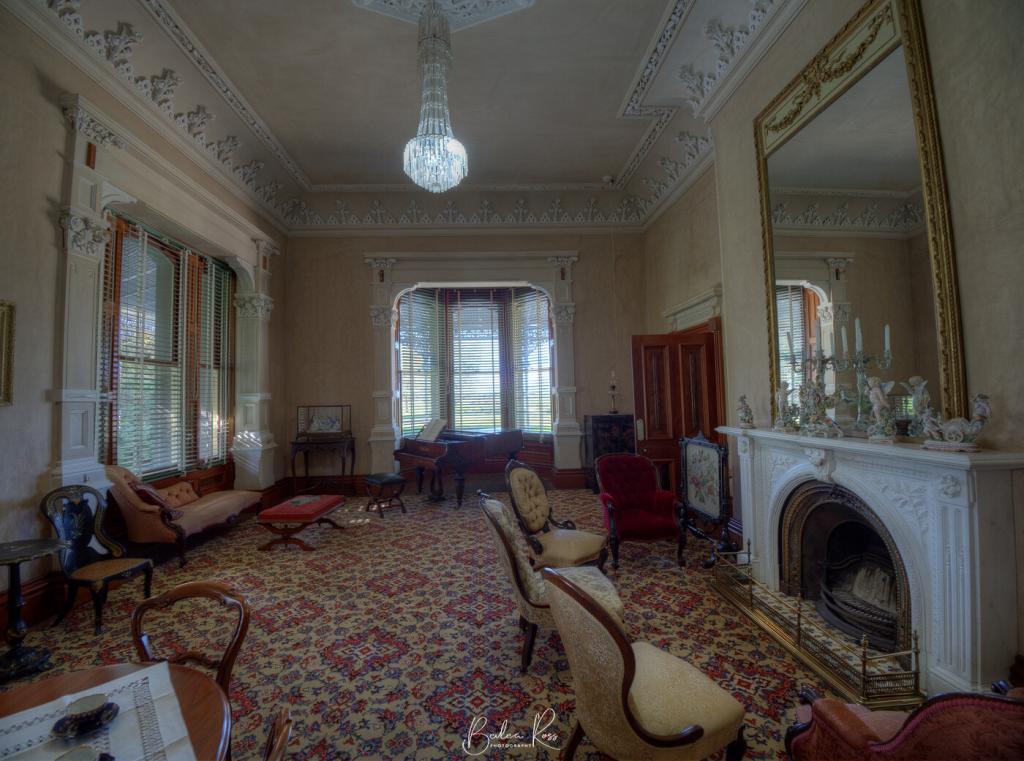
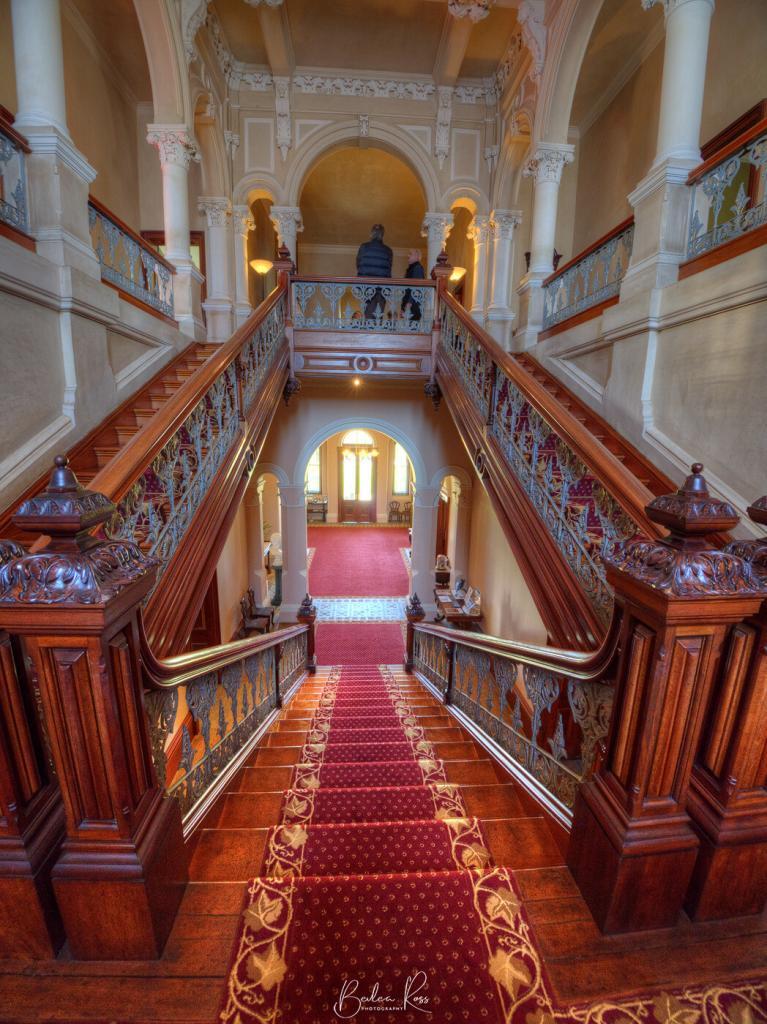
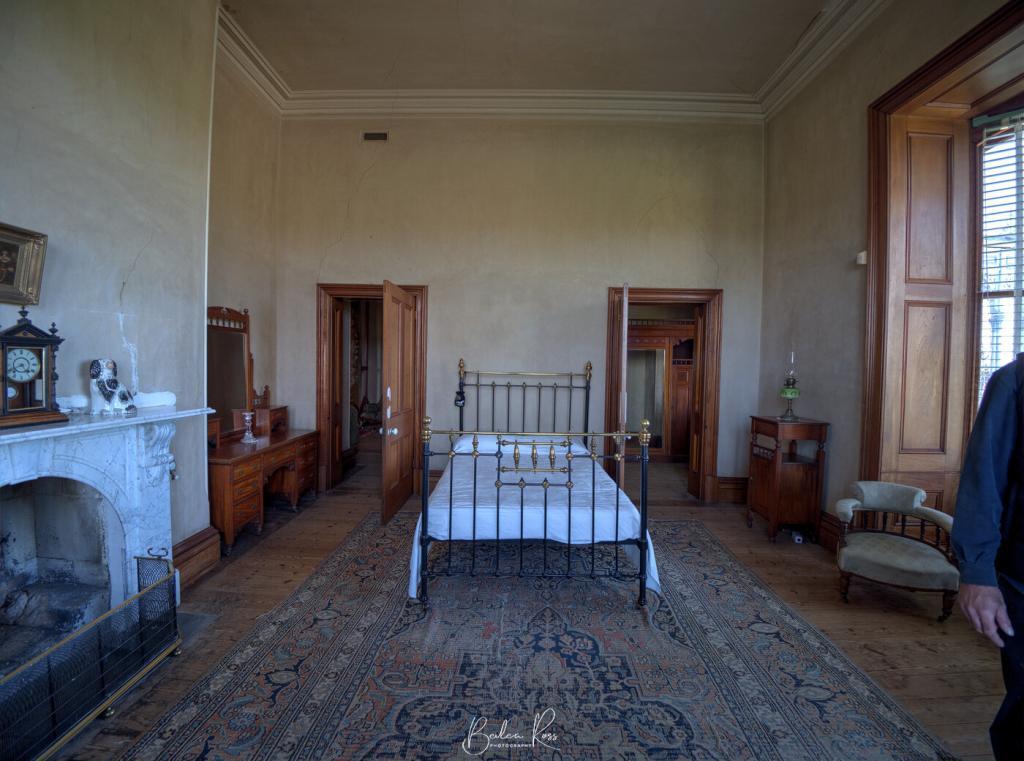
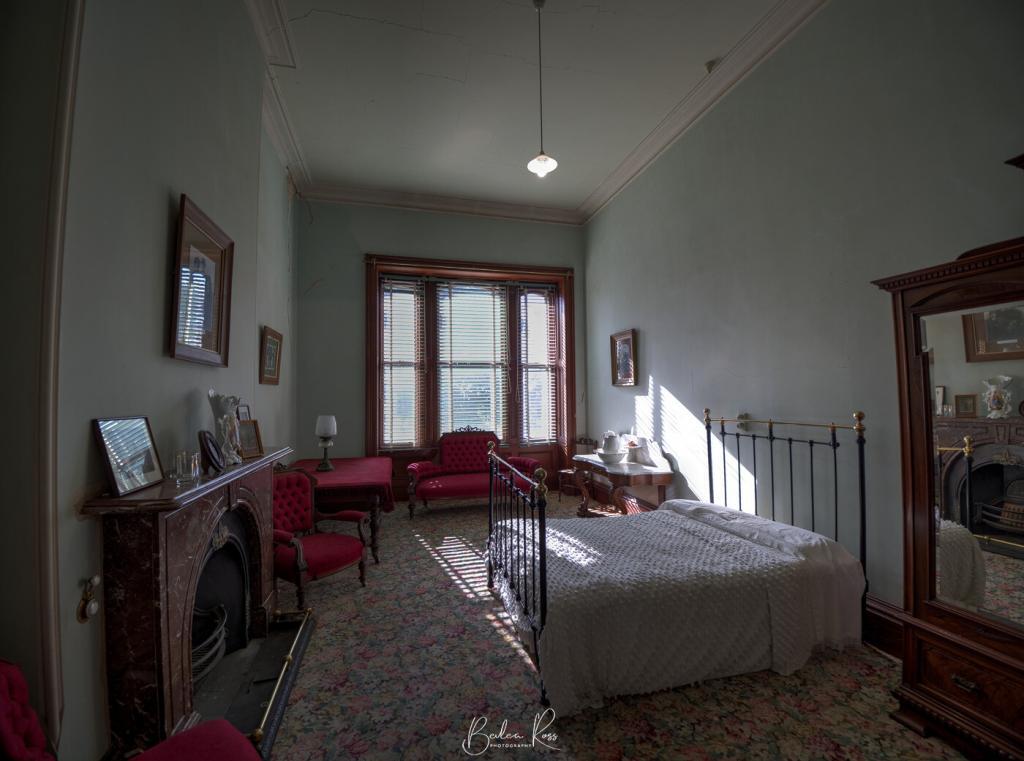
Address:
Barwon Park Mansion: 105 Inverleigh Road, Winchelsea 3241 VICOpen:
Open Wednesday and Sunday, 11 am to 4 pm. Tours run at 11am, 12pm, 1pm, 2pm and 3pm. Group tours are available by appointment. A Virtual Reality headset is available for mobility-impaired visitors courtesy of the State Trustees Australia Foundation.Cost:
National Trust members: Free Adult: $10 Concession: $7 Child: $4 Family (2 adults + 2 children): $20The Grampians (Gariwerd) is a series of rugged sandstone mountain ranges and forests rich in wildlife. One of Victoria’s most popular holiday destinations, the Grampians are the destination of day-trippers and campers. They all come for rock climbing, scenic drives, bushwalks, and nature. The tiny and bustling yet laid-back town of Halls Gap is at the heart of Grampians. Its popularity is evident in many accommodation options, from backpackers to luxurious resorts and its many dining options.
Bushfires
On 15 January 2014, a bushfire which was sparked by a lightning strike started in the Grampians National Park. It was one of 68 fires burning across Victoria during this time.
The fire coincided with a heatwave across Victoria with temperatures reaching over 40 C in the Grampians region from 15 – 20 January. The fire eventually burnt 52,000 hectares including bushland and farms and was declared contained on 21 January 2014. Many residents from Dadswell’s Gap, Wartook, Brimpean, St Helen’s Plain, Roses Gap Pomonal, Bellfield, Lake Fyans, Lake Lonsdale, Heatherlie and Ledcourt were affected by the fires. Halls Gap was threatened by the fire front and ember attack and most of the town evacuated. Relief centres were set up in Horsham, Stawell and Ararat for the hundreds of people who were evacuated from their homes. Farmers lost large numbers of sheep that were either killed by the fire or later culled. At least 7000 sheep in total were lost.
A 12 km wide pyro cumulus cloud column of smoke and fire was created by the fire, generating its own weather pattern including lightning and thunder. This cloud gathered burning embers into the sky, which then scattered for many kilometres beyond the fire front, potentially starting new fires .
Australian Emergency Management

Halls Gap
In January 2015, and stayed in a fabulous little house near town that backed onto the National Park. We had a constant stream of wildlife visitors from when we arrived until we left three days later. Kangaroos, Cockatoos, Finches, Emus, and Crimson Rosellas were always nearby.

Break it up, kids
Boroka Lookout
We saw many of the lookouts had been rebuilt due to the last bushfire. Unfortunately, gone were the old wooden railings lost in the fires. In their place, however, were lovely new stainless steel railings at Boroka Lookout. The lookouts at McKenzie Falls have also been rebuilt, along with new amenities blocks. However, the kiosk that stood there is gone and hasn’t been rebuilt. Just the chimney remains.



Melbourne Open House is an annual event held at the end of July. Its goal is “connecting people with good design and architecture in the city”. Over 100 buildings of significance that are generally closed to the general public are open during the two days it runs. Either through tours or self-guided.
It’s always massively popular, with tickets for some locations (all of it is free) going within minutes of bookings opening. I missed out on the tours with ticketed entry. But I was taking part in the ones where you joined a long, snaking queue or took a self-guided tour.

Victoria Police Mounted Branch
Constructed in 1912 and one of the most extensive stables built and remaining in Melbourne, it houses 17 horses. They will move to new, purpose-built, modern stables at Attwood in the next few months. The Victorian College of Arts recently purchased the building.

After a refurbishment that keeps the heritage aspect intact, it will open as an art gallery space. The queue here took an hour to get to the door, and we were in and out in about 20 mins. The police horses are used in crowd control and search and rescue. The horse is nudging the ball (how they teach them to push people back) is massive. He’s the tallest one they have and stands at 17 hands high.

State Library of Victoria
Opening in 1856, with the famous dome completed in 1913, the State Library takes up an entire city block. It is Australia’s oldest public library and one of the first free libraries in the world. They claim to be Australia’s most patronised library, with 1.7 million visitors through the doors each year and another 3 million online. The state library is about to undergo an $83 million renovation, with $53 million being spent on Queens Hall alone. The renovation of Queens Hall will restore it to a reading room, reopen the skylights, and feature a new rooftop garden terrace.


It’s a truly magnificent building, with the Latrobe Reading Room under the great dome at its heart. Its massive rooms and high vaulted ceilings are exhibitions of paintings and sculptures, and books. The forecourt features statues, gently sloping lawns, and two large chess boards. Queens Hall is located in the oldest part of the building and, except for special events, has been closed since 2000. It’s a vast hall 145 feet long and was the original reading room until the domed hall opened in 1913.

Substation J
We arrived at the substation shortly after it opened on Sunday, and the queue was small. Substation J is an operating substation with live electrical equipment. So, we had to dress up with hairnets, lab coats, and hard hats (not that I understand how a lab coat would save me from electrocution. The substation was considered ‘state-of-the-art’ when it opened in 1953. However, Substation J has been a hidden time capsule since it closed in 1980. It remains a functioning power station. However, it is now fully automated, and the old control room is shut off and off-limits to all except a few. As the old control room was offline, there was no danger of us plunging the city into darkness ;). So we were encouraged to play with the buttons and handles while there.

Tasma Terrace
Considered one of the finest examples of a 19th-century, three-storey terrace house, Tasma Terrace began life as a guest house in 18. In the 1970s, there were plans to demolish the building and build high-rise towers. However, the National Trust of Victoria purchased it after a successful public campaign.

One of my favourite TV shows is Miss Fisher’s Murder Mysteries screening on ABC TV; so, when the Phryne Fisher exhibition was announced at Ripplonlea, we had to go! Set in Melbourne in the 1920s, the series is based on the novels by Kerry Greenwood. On display are costumes from Season 3 of Miss Fisher Murder Mysteries at Ripponlea Estate, the home of Aunt Pru in the series.

Ripponlea Estate
Sitting on extensive gardens, Ripponlea is a beautiful, intact, Italianate mansion constructed in 1870. The gardens are still there thanks to the last owner (Louisa Jones) and the National Trus. Both fought a compulsory acquisition order from the ABC in the 1960s and ’70s. The ABC wanted four acres of their gardens to allow them to extend the ABC studios. Thankfully the ABC lost and settled with just .8 of an acre. Upon Louisa’s death, Ripponlea was bequeathed to the national trust.

Costumes of Season Three
The costumes featured are designed by Marion Boyce, and they are fabulous. they are full of period detail and made from the most fantastic fabrics. The exhibition spills across rooms, downstairs and upstairs, with rooms set up depicting episodes and costumes from season 3.


We enjoyed a delicious lunch at the Wardlow Tearooms, complete with fine china. Then we walked around the gardens, past the tennis courts, the ornamental lake, and through the massive fernery.

Season 3 of Phryne has now finished. Fingers crossed, we get a season 4. The exhibition was fabulous and runs until September this year; well worth a visit.







